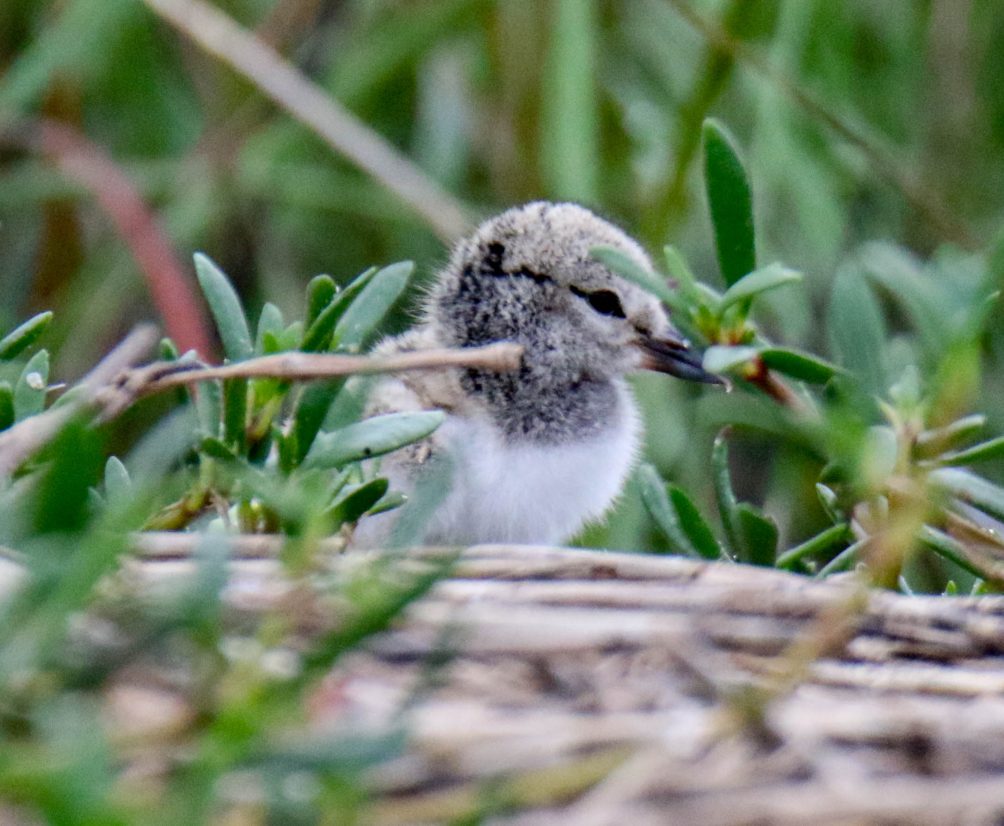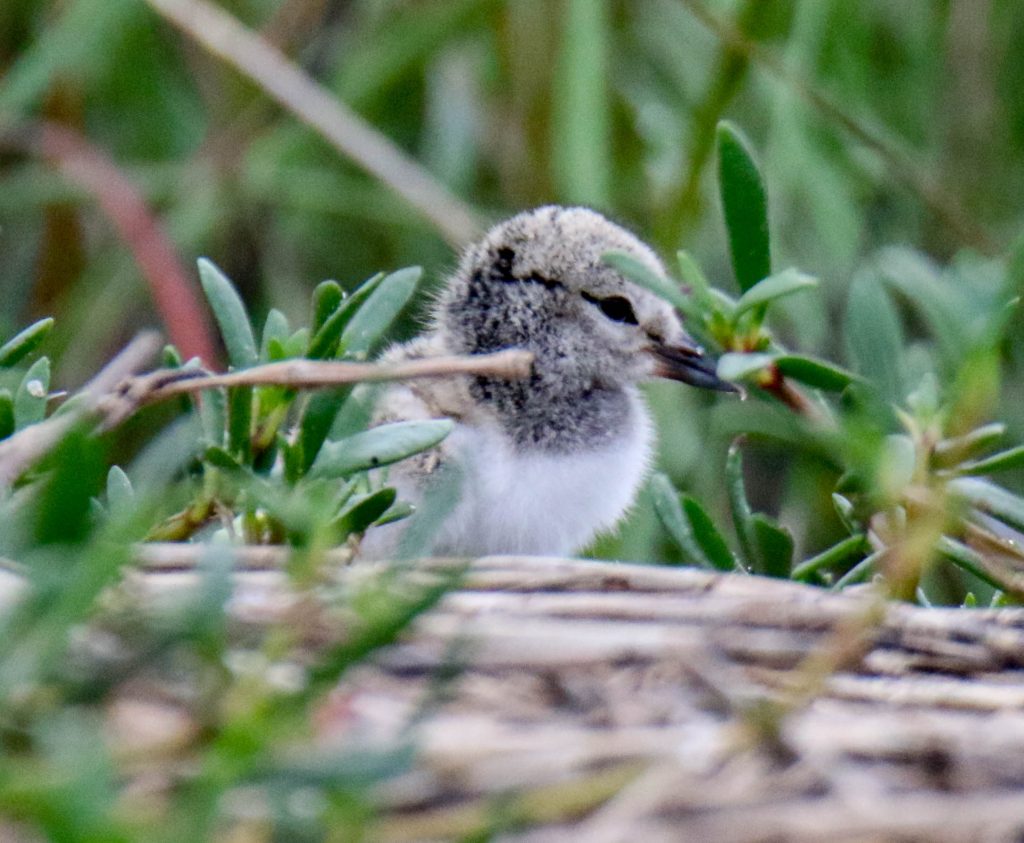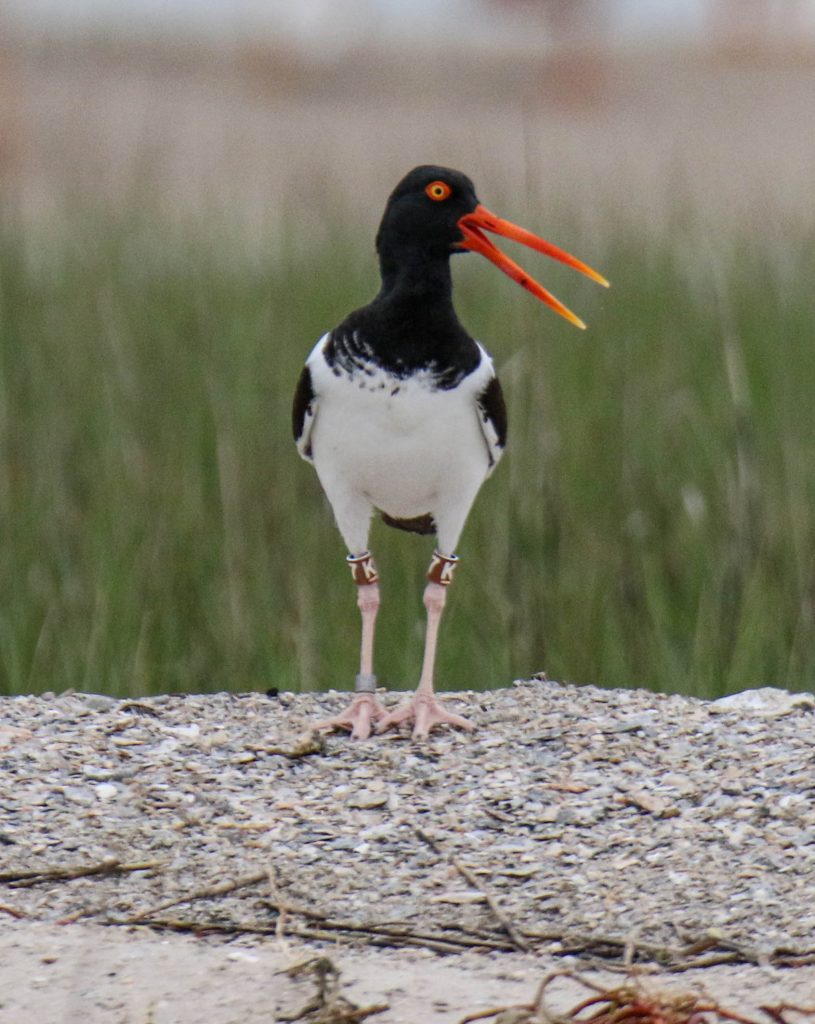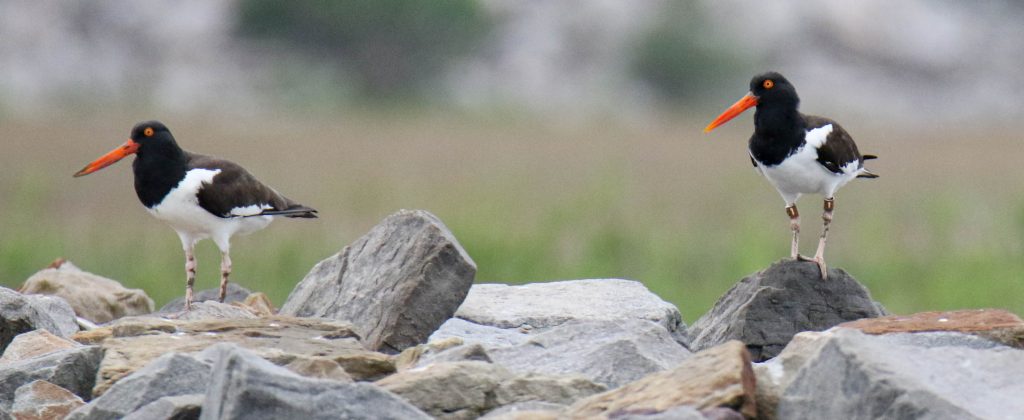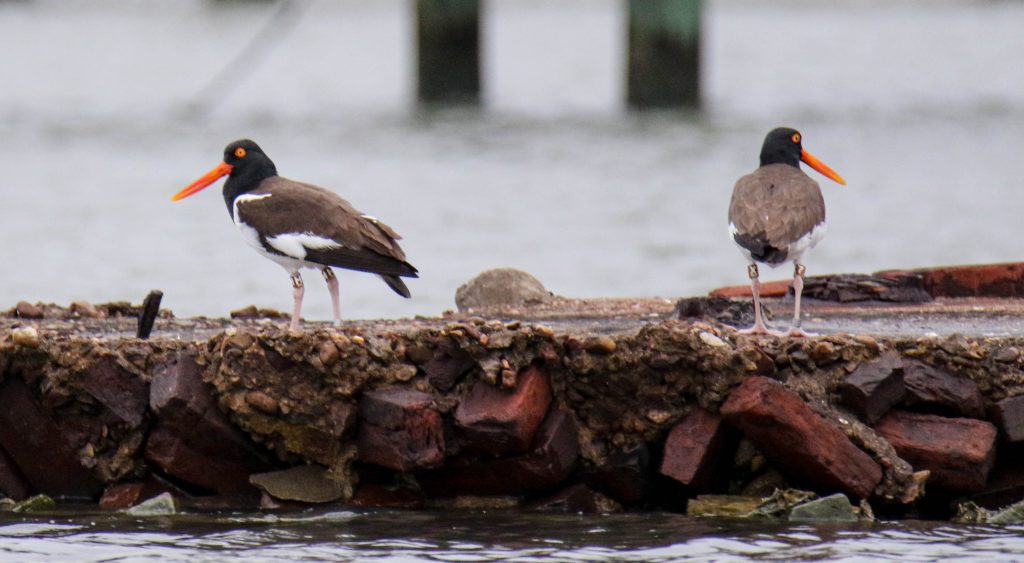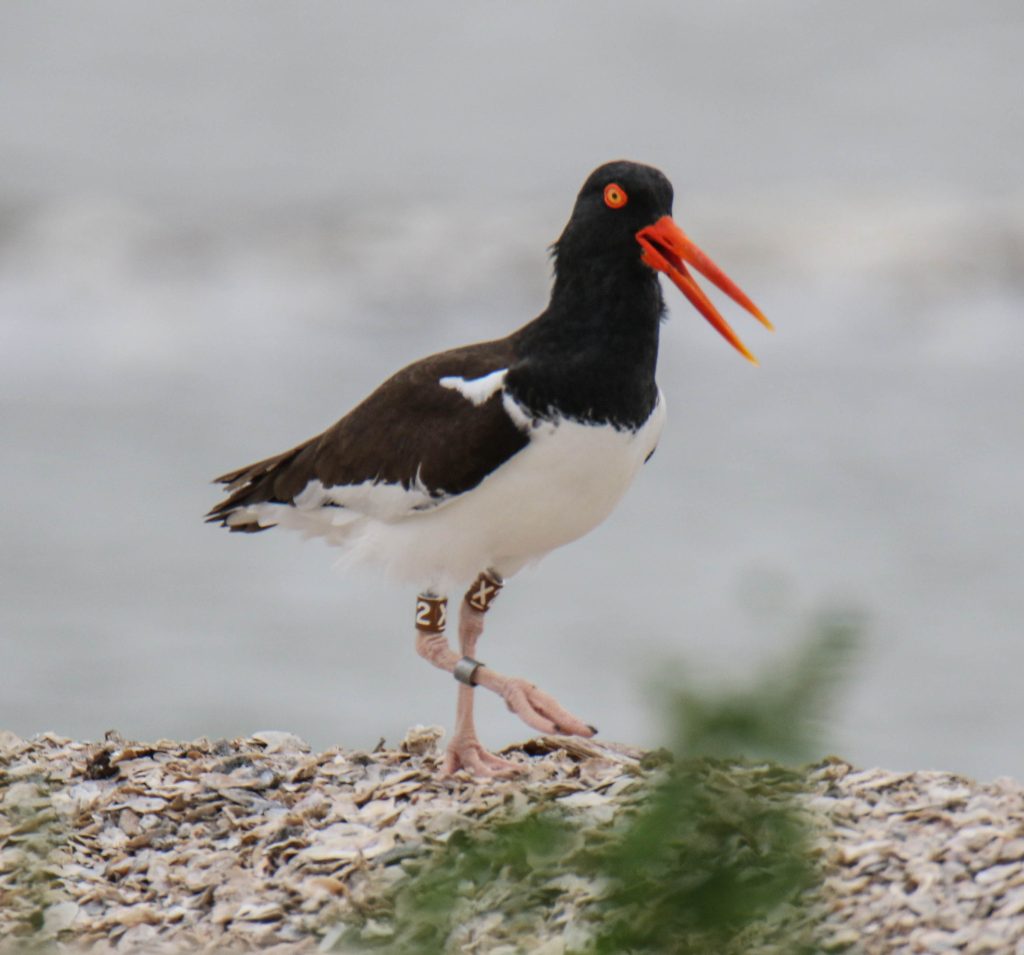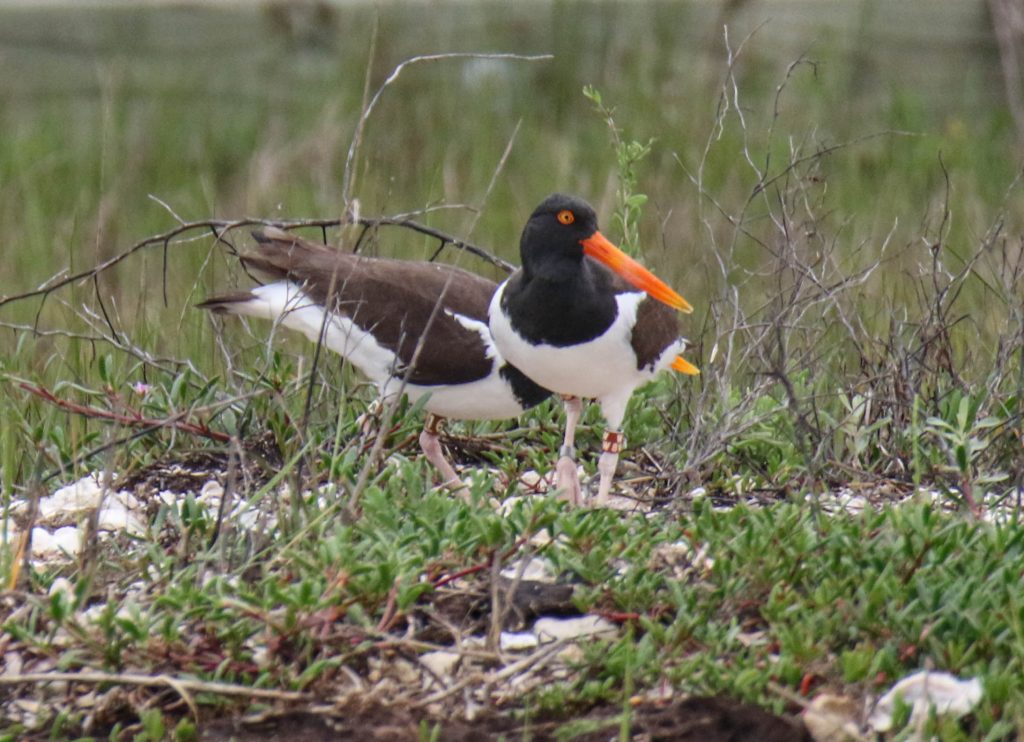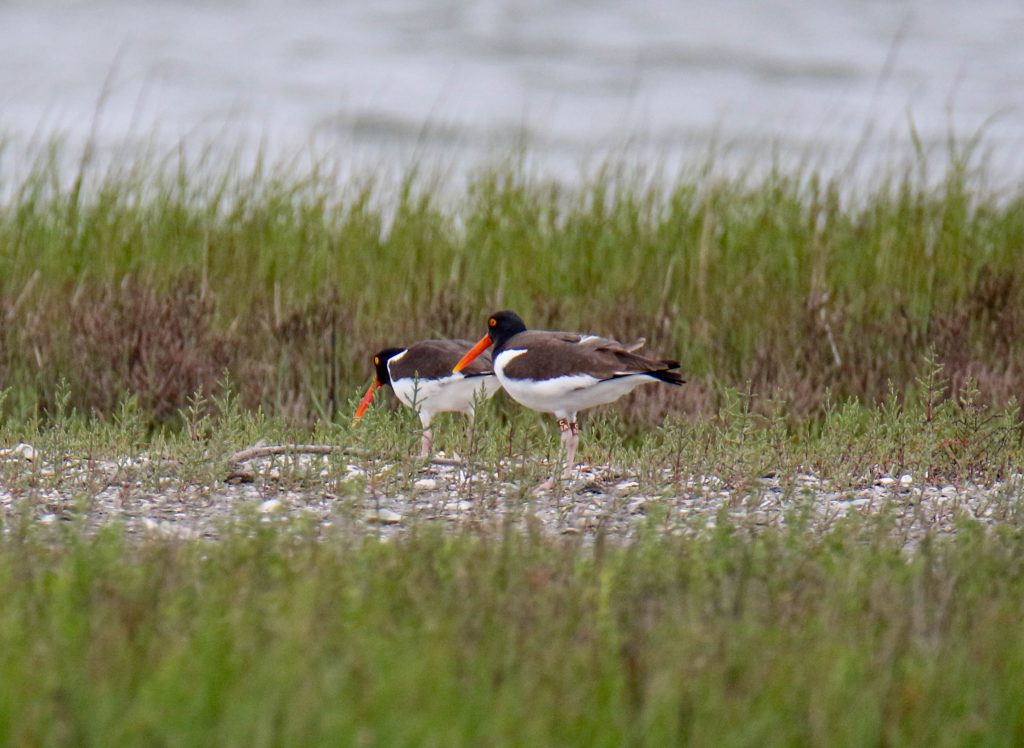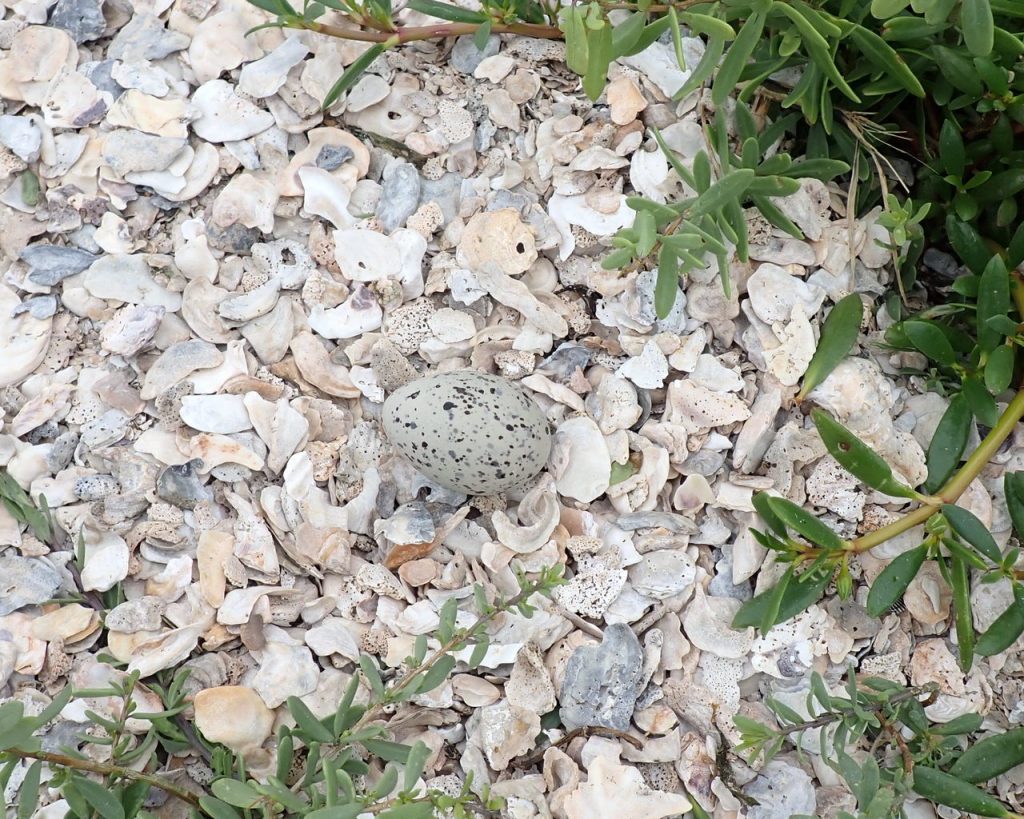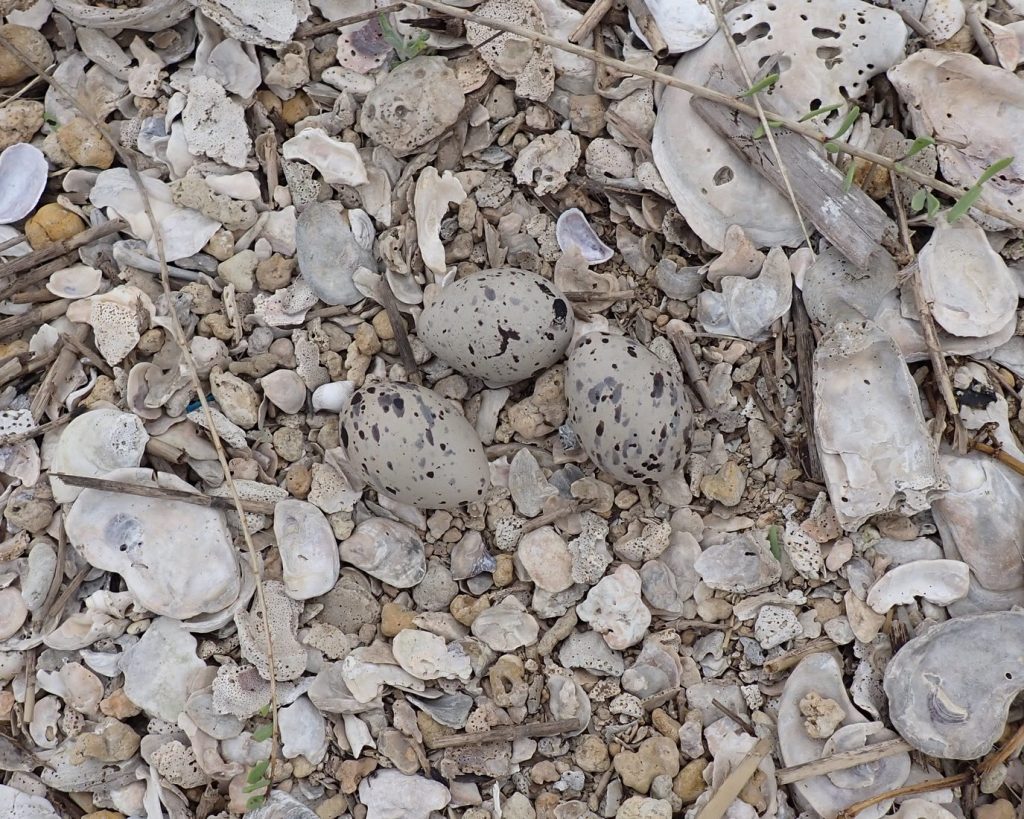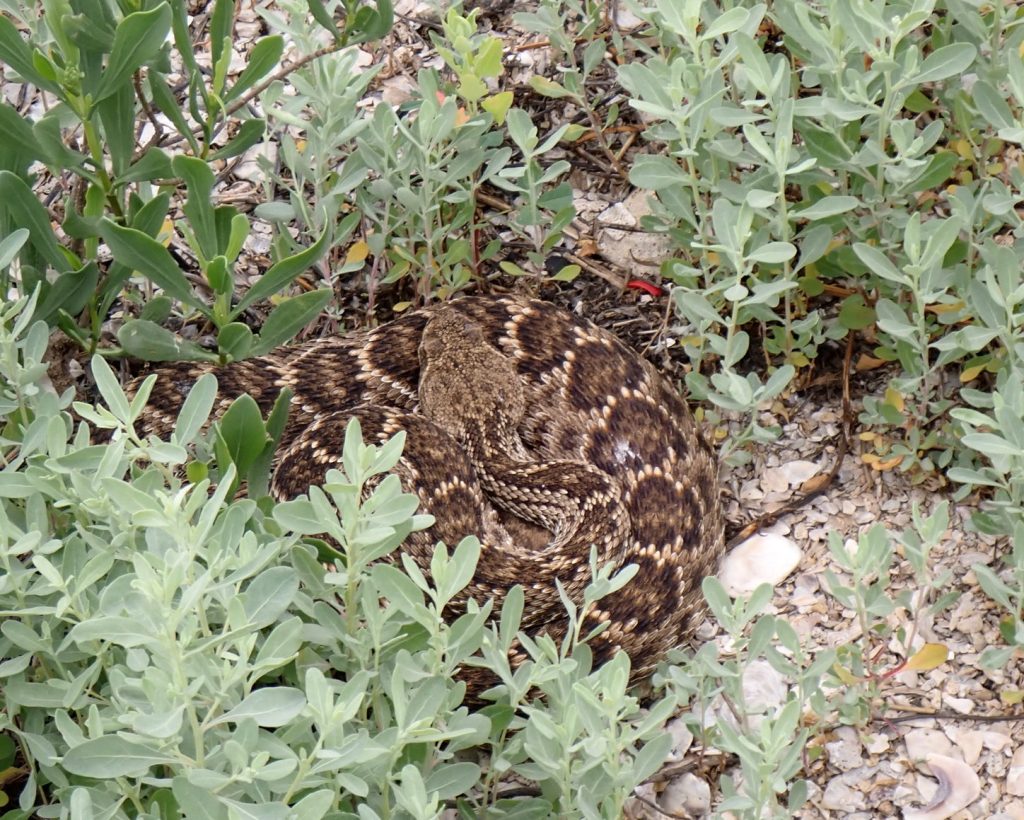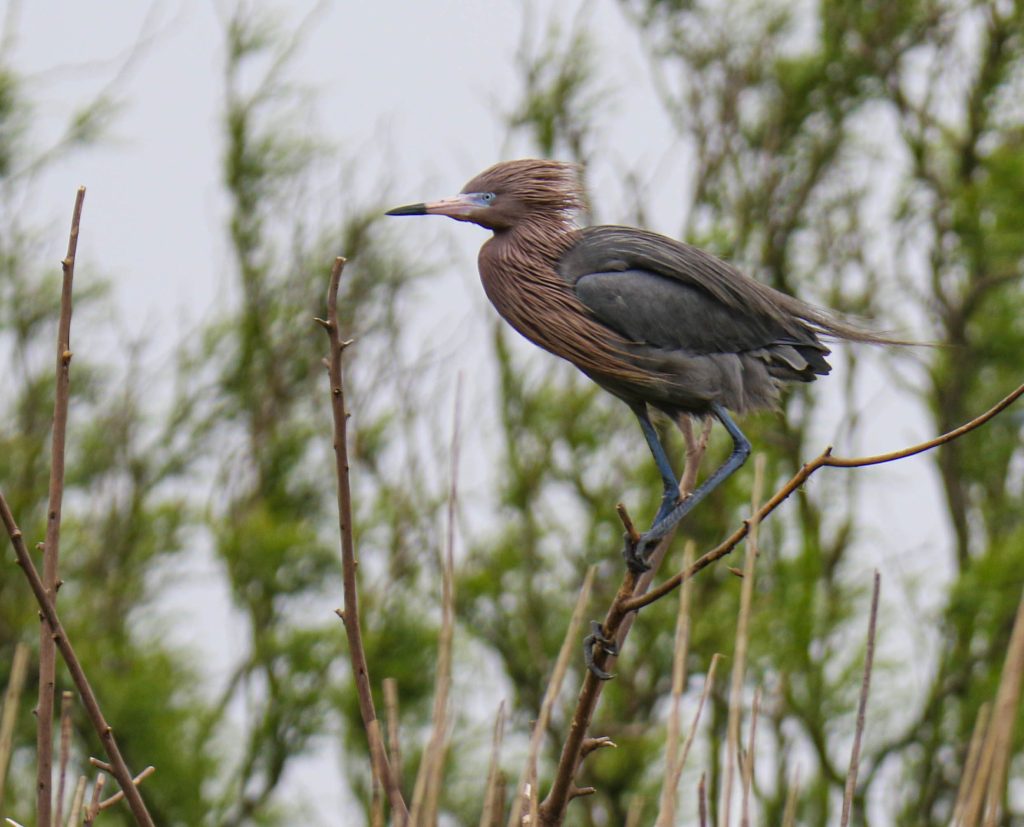By Susan Heath
It was too windy to go out to East Matagorda Bay on Tuesday and I was tied up on Wednesday with another project so we just had to skip it. Hopefully we can go next week. Alan and I headed out to West Galveston Bay on Thursday. The Tiki Channel pair was not present so we went under the railroad bridge and headed over to Virginia Point. One of that pair (C2A) flew out from the breakwater and scolded us. Hum. What’s up with that? I suspected that was a warning to leave them alone because they had a nest but we didn’t see the mate on the shoreline anywhere. Perhaps we will get some more clues in future weeks.
20 & unbanded were tending three eggs, increased from two last week. Same story for LR & unbanded although only one of the adults were there. We entered Swan Lake and searched for 11 & unbanded in their usual spot on the breakwater. They weren’t there and they weren’t along the shoreline where they nested last year. Where did they get off to?
We gave up on them and headed over to K7 & unbanded. It was time for their nest to be hatched and sure enough they went nuts when we arrived. There was one chick and one egg in the nest scrape. The other chick was nearby. There weren’t any chick sounds coming from the egg so I suspect it won’t hatch.
K7 was particularly unhappy with us.
We left them to their business and headed over to check on the other two pairs. 39 & unbanded’s territory was covered with white pelicans and we didn’t see them anywhere. X3 & unbanded were still incubating three eggs. Woohoo! As we exited Swan Lake, I took the boat between the breakwater and the mudbank where 11 used to nest eons ago before it eroded so badly. Suddenly 11 & unbanded erupted from the marsh and landed on the breakwater. I guess they were just foraging back there but no telling. Their legs were covered with mud.
Back in West Galveston Bay we were once again greeted by 12 & unbanded flying out and circling the boat when we neared Struve Luci. There was a fisherman in a kayak near the island so all the chicks were already hidden and we had no chance to see any of them. HM flew out and circled us when we went near the boat docks. He landed on the end of the rock wall where X7 was already perched. Maybe they will lay a new nest there.
We headed to Jigsaw and found that LH & JX still had three eggs and YE & unbanded still only had one egg. Slackers! But then again, if they fledge a chick from that egg, it will be a good effort! X2 and W2Y were very unhappy with us but I did not find a nest for them.
The Caspian Terns have begun nesting and they don’t appreciate me trooping around looking for an oystercatcher nest so we will have to wait until we see X2 & W2Y actually incubating before we look again so we don’t disturb the terns again.
YK & unbanded were not along the Galveston shoreline where they usually hang out. Incredibly, 16 & W8W were still incubating their nest at the end of 8 Mile Road. It will be an incredible feat if they manage to fledge a chick from that nest! It’s in a very vulnerable spot from a predator perspective, but these birds have surprised me before so I won’t count them out.
We found lots of youngsters on the docks and C8A & unbanded were on the Gangs Bayou breakwater. They flew to one of the artificial mounds behind the breakwater though so maybe they will try to nest there.
A4A was incubating her nest and her mate was on the breakwater so we left them alone and moved on to South Deer. It was time for A1A & unbanded’s nest to be hatched and they were definitely not happy to see us. The eggs were gone and they scolded us mightily. We didn’t see any chicks but A1A & unbanded are stars at hiding them so we didn’t linger.
A5A & unbanded were incubating so we moved on to Y7 & unbanded. We haven’t been able to find them for several weeks so I was very happy when we spotted them on a shell bank a bit down the island from where they have nested in the past. I guess they decided to move next door because they had a one egg nest there.
F1A & E2A were still incubating their eggs. It was pretty entertaining watching whichever one had been incubating trying to sneak away through the tall vegetation. We already know you have a nest! They try SO hard!
I really wanted to get a look at some of the Struve chicks so we headed back over there hoping to surprise them and catch the chicks out in the open. No dice. Boo!
On North Deer, E8A & unbanded were still incubating two eggs. We found C1A’s mate standing along the shoreline but we didn’t see her. Suspicious! As we motored along the island edge I saw her fly off a nest from behind some vegetation. Three eggs!
I had to negotiate this bad boy to check the nest.
Thankfully it was a little chilly and it was in a docile mood.
YM & JH were still incubating their three eggs so we went to find J6 & UF. They were not on the breakwater or their island. As we headed to the backside of Marker 52, we saw one of them pop it’s head up from deep in the vegetation in an area that is already covered with nesting pelicans. Oh no. Surely, they didn’t lay a nest among the pelicans! That will NOT go well. I’m not sure what they were doing back there but I didn’t find a nest. The Reddish Egrets are looking quite spiffy!
JJ & P4 were chilling on a shell bank and so were W5 & JC. That wasn’t good because it meant W5 & JC’s nest had failed. And yes, when I checked the eggs were gone. The gulls and pelicans probably got it. FR & unbanded were still incubating their eggs and so were CA & Y2 so we headed back to the boat ramp.
If you like oystercatchers and you want to support this project, you can make a donation (thank you!) on our website here. And how could anyone not like oystercatchers! You can also adopt a pair of oystercatchers to support this project if you’d like. If you adopt a pair, you will receive an adoption certificate for your birds and I will update you monthly on their progress throughout the breeding season. All adoption funds will be used to fund our work for the oystercatchers.
Current Stats for upper Texas coast from Dickinson Bay to East Matagorda Bay: 18 nests being incubated, 5 failed nests, 6 nests with unfledged chicks, 0 nest with undetermined status, 0 chicks fledged
Note: All trapping and banding for this project is in accordance with federal and state permits issued to Susan Heath, GCBO Director of Conservation Research. Bird handling by volunteers is only permitted in the presence of Susan Heath and volunteers are trained in proper bird handling techniques.

